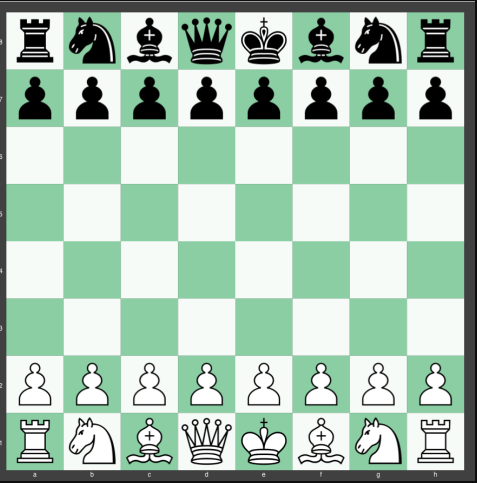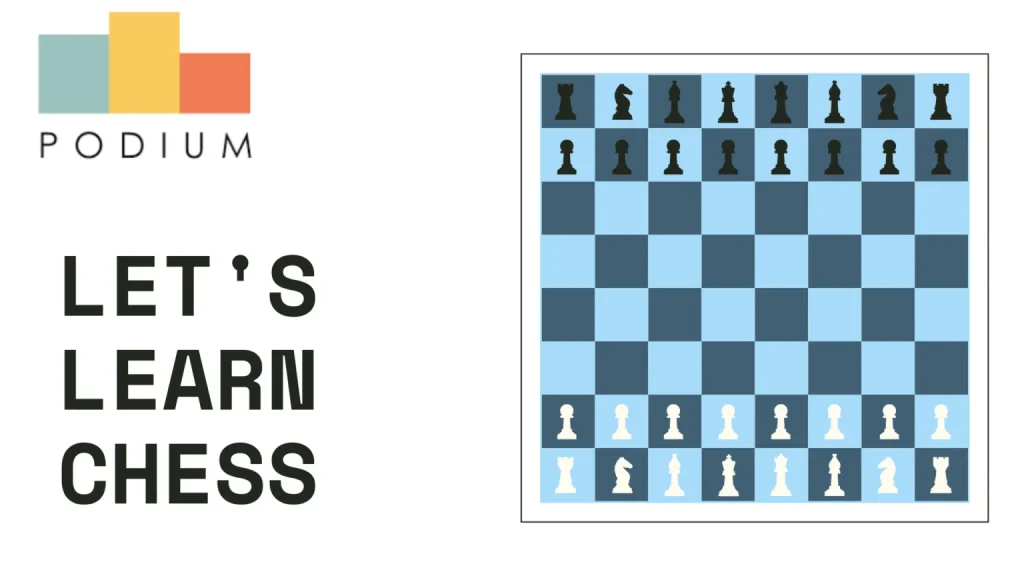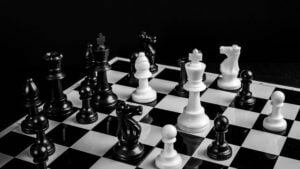Chess is a well-known board game that almost everyone knows! Many individuals, however, are completely intimidated when they see a chessboard, believing that it is a game for really intelligent people who they will never understand. They glance at the black and white chessboard and see 32 chess pieces they don’t recognize and don’t know what to do with. However, it is not that difficult once you start learning about chessboard and chess moves of all pieces.
Let’s Go Through Some Basics before we Learn about Chess Moves!
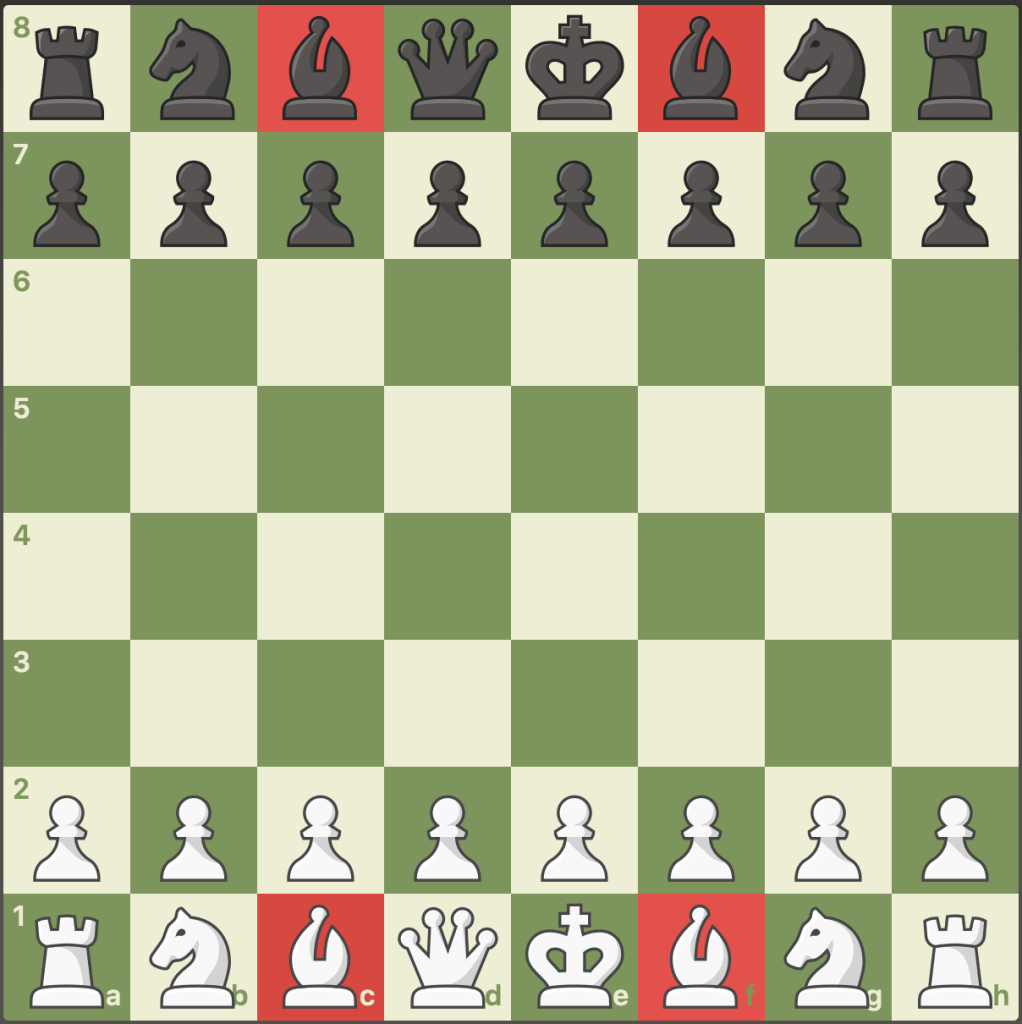
Before we go into all of the chess rules for the pieces, there are a few things you should know. The chessboard has 64 squares, half of which are visible white and half of which are visible black. Each player has eight pawns, two rooks, two knights, two bishops, a queen, and the most important piece – the king!
The moves of these different kind of chess pieces are as follows:
The Pawn Moves
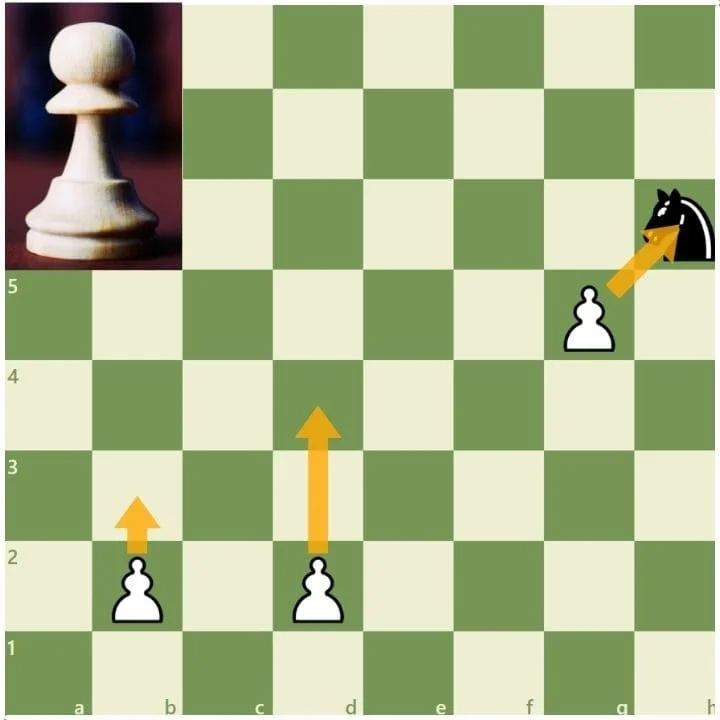
At the start of the game, each player has eight pawns in front of the other eight pieces. Because it is little and there are many of them on the board, the pawn is one of the most underappreciated chess pieces.
However, this is a deadly error; some renowned chess players even refer to them as “the essence of chess.” One reason for this is that they can transform into any other piece save the king once they reach the other side of the board.
Pawns have the fewest movement options of all of the pieces. They have the choice of moving one or two squares forward on their first move. A pawn can only move one square straight forward on all other moves.
The only exception is when pawns capture the opponent’s chess pieces – then they move forward one square diagonally.
Chess Moves : The Knight

The two knights, who resemble miniature horses, are the chess game’s minor pieces. They begin by standing within the rooks and have a value of three pawns.
This chess piece, sometimes known as the “horse,” has a peculiar way of travelling on the board that can be perplexing to beginners just learning the basics of the game. The only piece that can jump over other pieces is the knight.
Over the squares, it moves in an L-shape. This indicates that this chess piece moves two squares in one way (left, right, backward, or forwards) before moving one square horizontally or vertically. Don’t worry if that sounds unclear; just look at the diagram on the right.
The Rook Moves
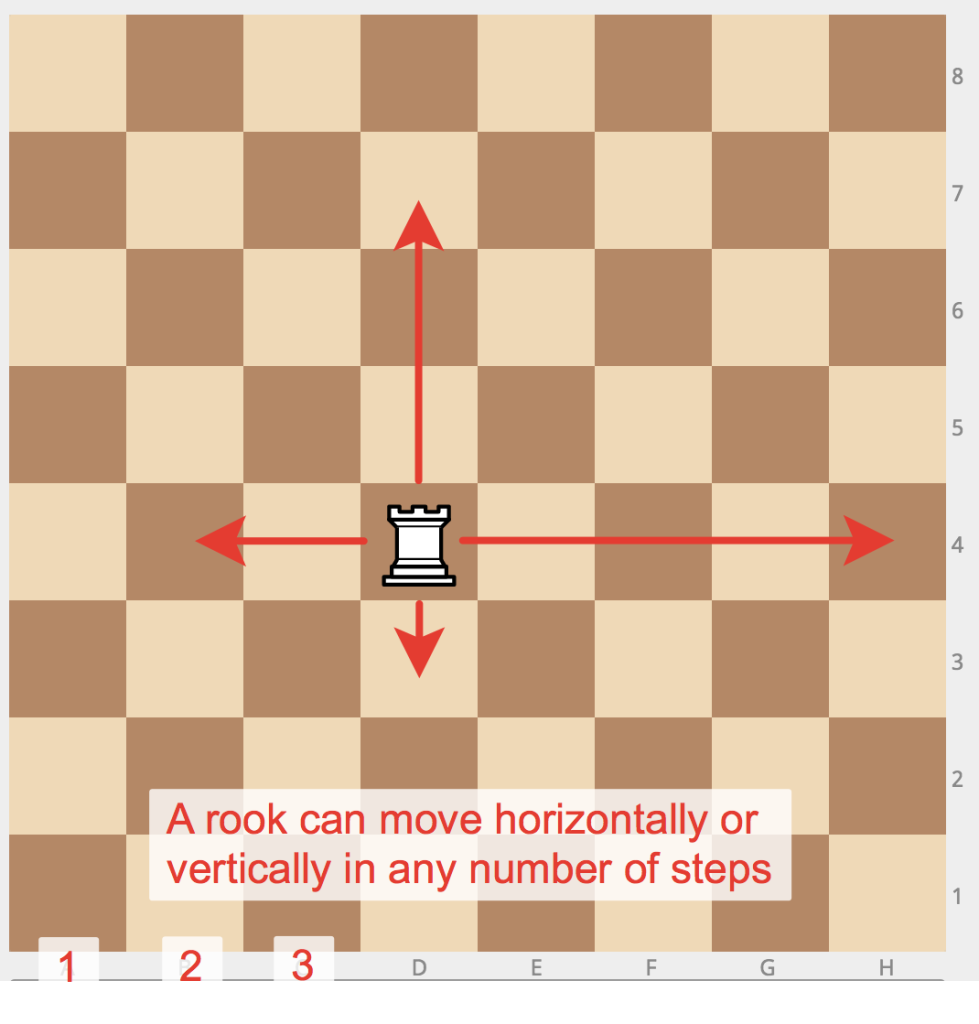
At the start of the game, you have two tower-like pieces positioned in the chess board’s corners.
A rook is an extremely valuable piece, with a value of 4 to 5 pawns and a long-range.
The movement is the simplest of all the pieces to learn: rooks can move forward, backward, left, or right. The rook, of course, cannot change directions at the same time.
They can travel any number of squares in any direction as long as no other piece is in their way, and they cannot jump over pieces.
Chess Moves: The Bishop

The two bishops are the game’s other small pieces. They sit next to the knights and are worth three pawns each, just like the knights (some grandmasters would value them at about 3.3 pawns due to how powerful they can be in open positions).
Fortunately, the bishops, who were originally known as elephants, move far more easily than the knight.
The bishop is the chess board’s ruler over the diagonals. The one on the left is light-squared, while the one on the right is dark-squared.
When there are no other pieces in their way, bishops can move in any direction diagonally, as many squares as desired.
They can capture any piece along the diagonals, and as they can reach so many squares (they can move from one end of the board right to the other in one move), they can prove very useful, especially when working in tandem.
In tandem, the two bishops cover the black and white squares of the chessboard. When you have one bishop, you can only cover half of the squares.
This is because the bishop only moves on the color of its starting square.
Your opponent can take advantage of this by placing his pieces on squares of the opposite color. Now your bishop cannot attack his pieces.
The Queen Moves
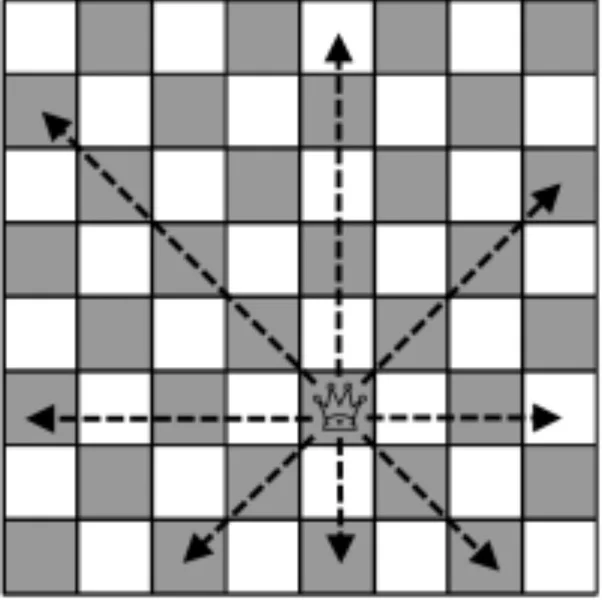
The Queen, with her crown on her head, is the most significant and powerful piece in the game of chess (apart from the king!). Only one queen is available to each player, and she is worth nine pawns!
The queen sits next to the bishop on the centre square, which is the same colour as the piece (a black queen starts on the black square in the middle of all the other pieces, a white queen on a white square).
She can become the most hazardous member of the game for your opponents because she has the widest reach of all the pieces. It’s critical to both safeguard her and make appropriate use of her.
She has the ability to move in any direction and across any number of squares. She is unable to jump over other pieces, however. Any of the opponent’s pieces that are in her way can be captured by the Queen.
This component can be used for a variety of tactics and attacks. Avoid bringing your queen out into the open too quickly, since she may be threatened by the opponent’s pieces.
Although the queen is a strong attacking piece in chess, don’t overlook her ability to assist you protect your king.
Keeping your queen close to your king helps him protect, but she can also defend from afar.
As long as there is an open path to the king, the queen can act as a defender from across the chessboard.
This path can be in a straight line or diagonal because the queen can travel in all directions!
The King Moves

The King, who wears a cross on his head, is the most crucial piece in any chess game and is placed next to the Queen. He’s worth innumerable pawns and the lives of all your other pieces because when you checkmate the opponent’s King, the game is over and you win!
As a result, it’s critical to protect your king while also attempting to weaken your opponents’. The king’s mobility is restricted. He can only advance one square in any direction at a time, and only if he is not placed in check as a result.
When the king is under attack by an opponent piece in chess, he is in risk of being captured on the following move.
A check can be handled in three ways. These are the following:
a) Take control of the attacking piece
b) block the check with one of your pieces, so the king is shielded,
c) move the king to a square where he isn’t under attack.
If none of these choices are available, the check becomes checkmate, and the game ends.
It’s possible that your king is out of check but lacks a safe tile to move to. A stalemate occurs when you are unable to move any of your other pieces, and the game is drawn.
Knowing when your king is unable to move is crucial since a stalemate can be used to draw a game even though you have fewer materials. This is a typical chess strategy at the end of a game.
Thank you for reading our blog we hope that you learnt something new and interesting today!!
Share with your friends



